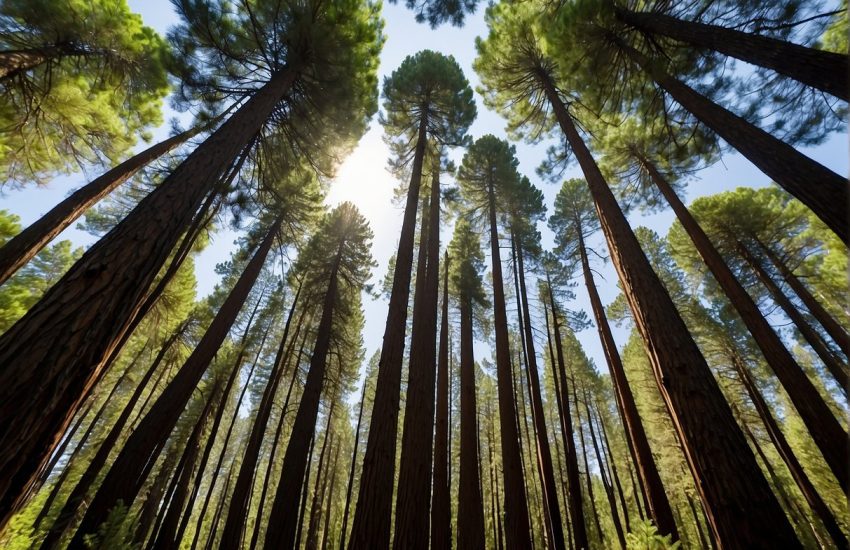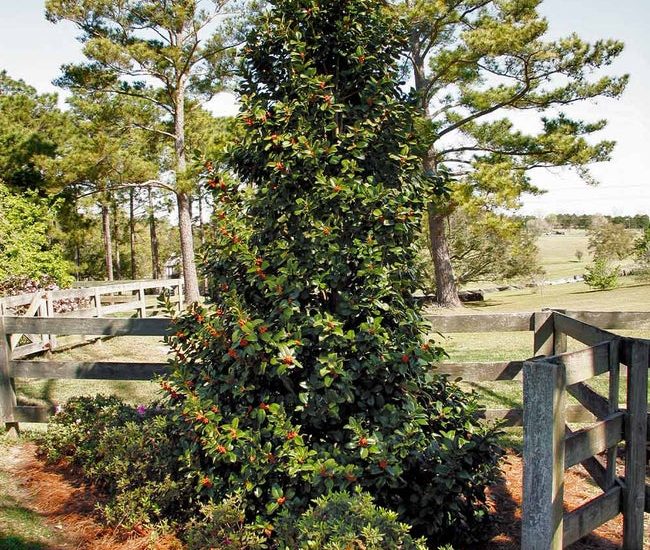7 Best Pine Trees To Grow In Kentucky
There is a reason why Kentucky is called the Bluegrass State, since some of the grass there is so deep a shade of green that it has a blue tint to it.
‘Despite all of this, the state offers much more than just this, and if you love the outdoors, not to mention activities such as horse-racing, this is where you want to be.
The state of Kentucky is where you will find more than 12 million acres of forest, with the majority of them consisting of oaks and hickory trees.
As you travel throughout the landscape, you will find a plethora of trees, mostly because there are more than 50 state parks in the region.
It is the red maple that is the state’s most commonly occurring tree. However, if you prefer pine trees, you can also find them in this state.
There are types of pine trees in Kentucky, so there is certainly no shortage of them to look at, and whether you love them for their pine nuts or because you like to use their cones as decorations, you will find plenty of them to choose from. The four types of pine trees that can be found in the state of Kentucky are described below.
Red Pine Tree

If you’re in need of a tall, straight, majestic tree that can thrive in the North, you can’t go wrong with a Red Pine.
This tree can live up to 300 years, it’s incredibly strong, it’s able to withstand harsh weather conditions and it’s easy to grow.
Known also as the Norway Pine, the Red Pine is exempt from the adverse effects of wind and snow. As it grows, it naturally prunes itself, dropping dead branches.
In other words, it will have a nice clean trunk as it ages without excessive pruning being necessary on your part.
They are ideal trees for windbreaks on large properties, or for providing year-round green in harsh winter areas. They only require a sunny location and well-drained soil in order to thrive.
Mugo Pine

There is no yard without evergreen plants to help balance the landscape design and add interest in the winter months.
You can join the fan club of the Mugo Pine (Pinus mugo var. mugo), a small, reliable, evergreen tree.
Native to the mountains of Germany and Poland, the Mugo Pine is a low-growing variety with a dense growth habit and a rounded shape.
Its excellent form, texture, and color can be relied upon to provide interest throughout your garden.
Traditionally used as foundation plantings, these evergreens are now becoming a popular addition to landscaping as an accent plant.
Use this low-growing variety to make an impactful statement in your landscape and to add deep, dark green color throughout the year.
Bonsai enthusiasts enjoy working with the architectural Mugo Pine. It takes them months, sometimes even years, to carefully sculpt these small plants into works of art that can live for centuries. You may want to consider using a full-size plant to offer the same type of striking contribution to your yard as well?
Ponderosa Pine
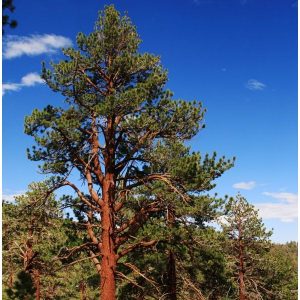
Pines such as the Ponderosa Pine or Pinus Ponderosa will grow well on most soils, including very sandy soils and sites that have a very small amount of topsoil. The ponderosa pine is very drought resistant once established.
Starting from a 2 year old seedling, Ponderosa Pine trees can grow to a height of six feet with good care, starting from a two year old seedling. In addition to being a tall and stately tree, it is also widely used in windbreaks.
In the United States, the Ponderosa Pine is the most frequently planted large, long-needled native pine.
This plant has soft, dark green needles that are 6-10 inches long, arranged in bundles of three. The cones on this plant are between 3 and 5 inches in length.
Ponderosa Pine forests are not just important for their timber value, but they are also important for their wildlife habitat, recreation value, and aesthetic value as well. Despite its slow growth rate, the tree is a large evergreen that lives between 300 and 600 years.
Shore Pine
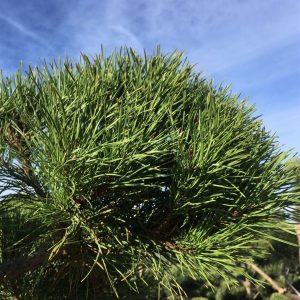
The focal point of every landscape needs to be strong, and this native selection would be the ideal candidate for the job.
Among the many conifers found in Alaska and southern California, the Coast Pine (Pinus contorta ‘Contorta’) stands out for its wild forms created by its twisting limbs.
Just imagine what they will look like in a Midwestern yard with all the constant wind that they are accustomed to.
The trees may be planted at the shores of a lake, along the coast, or even along a busy street.
This tree can handle salt spray quite well, as it is a tough, widely adaptable tree that can take it on!
As long as the tree is not buffeted by high winds every day, it will develop a broad, round canopy, but its contorted trunk will still be there. Traditionally, shore pines have been used by people to create miniature bonsai trees for their visual interest for generations.
Blue Shag Eastern White Pine
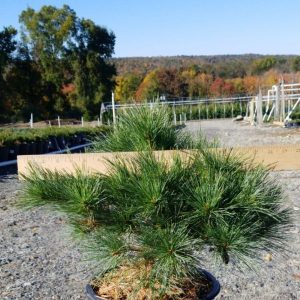
With low-maintenance Blue Shag Eastern White Pine (Pinus strobus ‘Blue Shag’), you can create an amazing landscape.
If you are starting from scratch or reworking a section of your landscape, you can count on these little cuties to deliver big on charm and aesthetic appeal.
This organically rounded shrub features long, soft needles, which add a textural accent.
The plant provides year-round structure and beautiful color without taking up a great deal of space.
You will never need to prune this plant as long as it has plenty of room to reach the mature height and spread listed on our Plant Highlights. Allow it to enhance the appearance of your planting bed.
Kids enjoy running their hands over the bluish-green needles that are soft to the touch. You will enjoy the refreshing pine fragrance, won’t you?
This compact and versatile evergreen shrub is ideal for adding vitality to your high-profile foundation plantings. The Pine is characterized by dense, mounding needles and a freeform, globe-shaped growth habit that gives it an appealing modern appeal.
Dwarf Mugo Pine
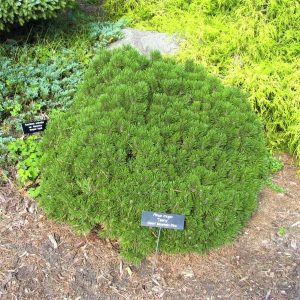
Mugo pines or Pumilo Pines, Pinus mugo ‘Pumilo’, is a popular dwarf conifer that is rugged, hardy, and has dark green needles on dense branches.
For xeriscaping or the application of a moisture-conservation landscape, it makes for an ideal choice.
There are several advantages of dwarf Mugo Pine, such as its slow growth and use in rock gardens, mass plantings and in groupings. Dwarf Mugo Pine can also be cultivated in containers.
For it to maintain its excellent form, texture, and color detail, this Dwarf Mugo Pine needs full sun and prefers a moist to average moisture level with a very well-drained soil in order to maintain its excellent form, texture, and color detail in the garden. If it stays in standing water for a long period of time, it will die.

